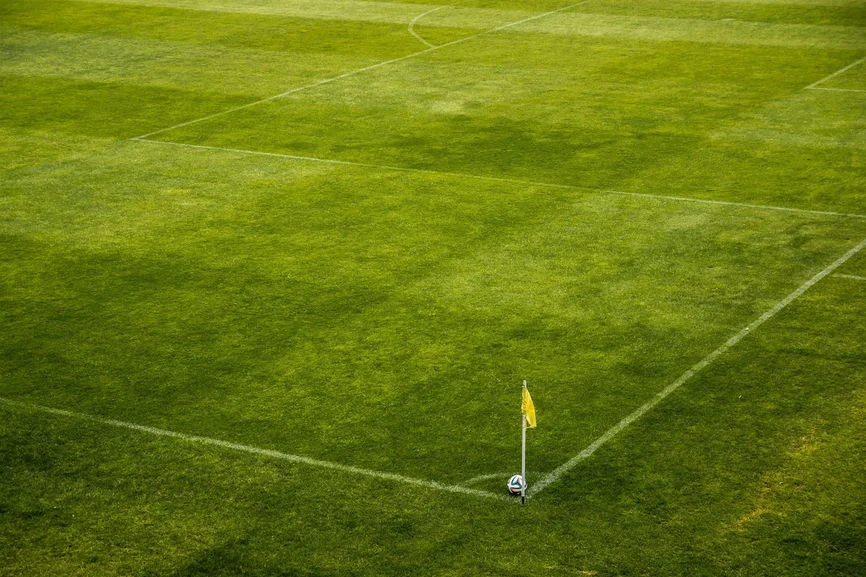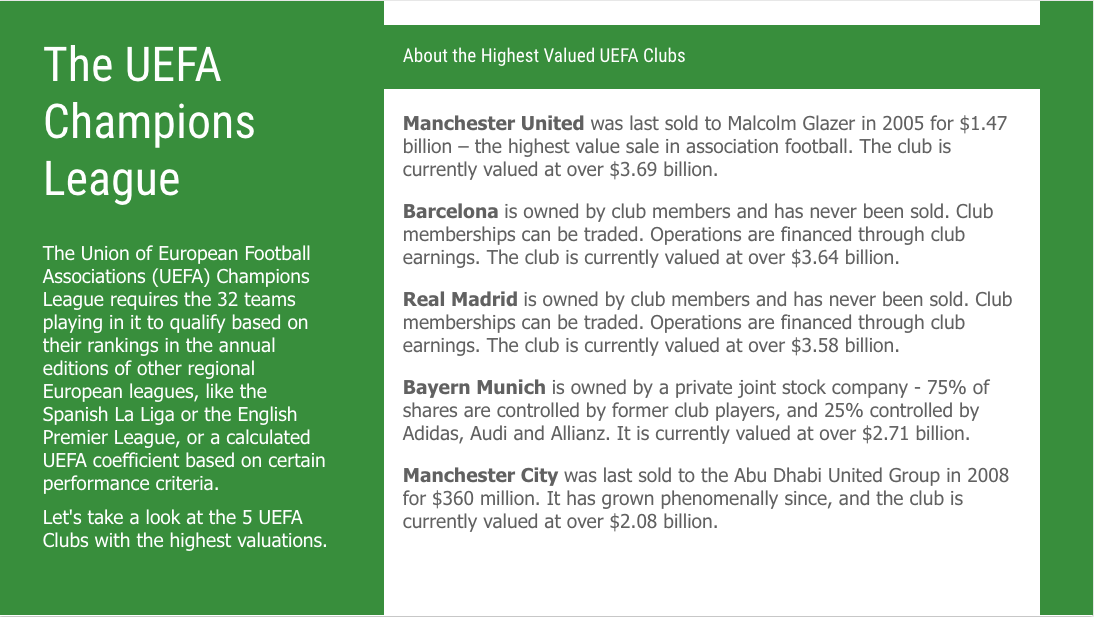There are currently 7 sports with well-known leagues - American Football, Baseball, Basketball, Cricket, Football, Ice Hockey, and Rugby.
A total of 165 sports clubs play in these leagues and each of them can be traded by their owners.
Most individuals or groups that buy shares in a sports club (or buy an entire club), do not view it as an investment - many of them are fans of the club and either want to keep it going in a time of crisis or just want to feel the joy of being a part or full owner of their favourite team.
There are others who will buy the club for the brand, and the potential for partnerships and deals that can be made on the basis of the brand.
In both the cases, the purchases are made by independently wealthy investors who always have other sources of income which lets them spend billions in initial investment, and then hundreds of millions in annual operating expenses just to support a hobby.
The Union of European Football Associations (UEFA) Champions League requires the 32 teams playing in it to qualify based on their rankings in the annual editions of other regional European leagues, like the Spanish La Liga or the English Premier League, or a calculated UEFA coefficient based on certain performance criteria.
Let's take a look at the 5 UEFA Clubs with the highest valuations.
Sports Clubs are often seen signing multi-million dollar contracts when buying players based on their performance, but how are the clubs themselves valued when its time to buy them?
Key Common Factors in Valuing a Sports Club
1. Revenue
2. Operating Income (EBITDA)
3. Debt
4. Expenses related to Players
5. Stadium Value and Maintenance Costs
6. Receipts from Tickets and Concessions
7. Value of Broadcasting Rights
8. Value of Merchandising Rights
What if Manchester United Were on Sale?
Read the entire report at https://datastudio.google.com/open/0B0UhR3D6B9RZOEJkeElseklrOXM
This Report was prepared by Kaushal Rao, RAP (Redwood Apprenticeship Programme) Intern, Redwood Algorithms; with assistance from Shefali Mahender, Digital Analytics Consultant, Redwood Algorithms; Megha Malpani, Digital Analytics Consultant, Redwood Algorithms; under the guidance of Rajdeep Dutta, Head, Redwood Knowledge Centre.
Sources:
Forbes, all retrieved on 2017 Aug 28






